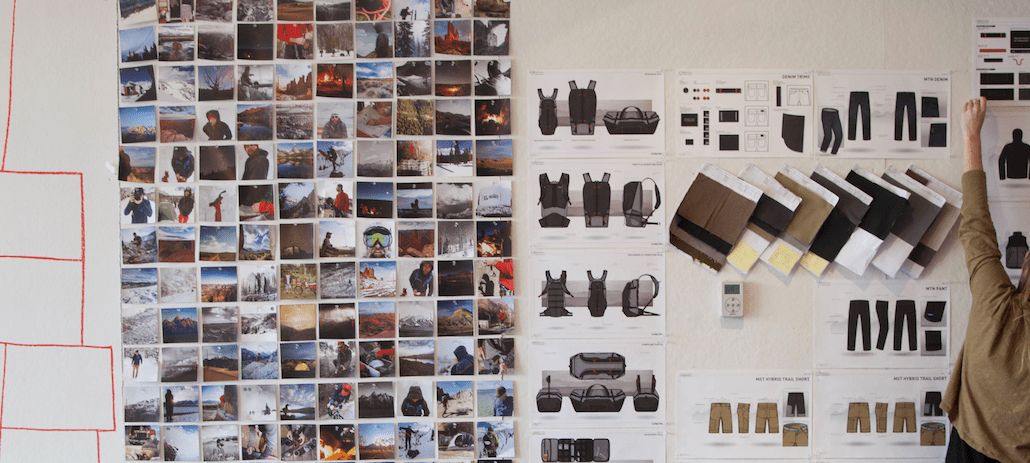Register by Jan 13 to save on passes and connect with marketers from Uber, Bose and more

The pressure is mounting on the clothing industry to reform its environmental and human rights records. Even Patagonia, which claims to be as environmentally conscious and cruelty-free as possible, runs into issues like supply chain partners that are glorified sweatshops. To combat the problems riddling the industry, a new outdoor apparel company is looking for fresh perspective — one that comes directly from its customers.

Mountain Standard, which sells small-batch outdoor apparel and fitness gear, states a company mission to sell a “handful of impeccable products instead of a lot of mediocre ones.” To prep for its digital and social campaign later in the year surrounding a new fall line, the company partnered with the agency Victors & Spoils to run a “Living Lab” experiment, inviting potential customers to come in and provide feedback on products and social strategy.
Setting up a pop-up shop in an empty space in V&S’s office building in Boulder, Colorado, where Mountain Standard is headquartered, the brand aimed to offer total transparency. The space was split into two sections: retail, where visitors could feel and try on prototypes, and a workshop, where plans for the upcoming campaign and new products were laid out on the walls.

“We have brand experience, but we wanted the customer insight,” said Eric Lyon, Mountain Standard’s co-founder who previously worked with The North Face. “We thought the best way to go about that was to be direct. There’s such a great creative community here in Boulder, and without that one-on-one with customers, we would have ended up with something totally different.”
Mountain Standard’s founders placed a big emphasis on participation. Gaining that initial consumer awareness was key, said Lyon, and their approach was to engage. By taking feedback on both product design and campaign strategy from visitors, the team effectively created a consumer base involved — and invested — in some of the brand’s biggest decisions.

The engagement reached beyond product colors and fit, though. Visitors to the Living Lab got to tell the brand how they wanted to be spoken to on social media and in advertisements.
“What excited us was the idea that the advertising is baked into the product,” said Jonathan Balck, president of V&S. “ If the consumer insight is productive enough, it should lead to both a product and advertising that’s compelling to people. The two shouldn’t be separate.”
Balck said that visitors to the V&S and Mountain Standard lab were prompted with four questions to help them phrase ideas for the campaign: ‘Tell us what RIMBY and the MST Zone mean to you,’ ‘How should we promote new sustainability,’ ‘Tell us your clever ideas to promote smart production & direct to consumer’ and ‘How can engine and human power combine to create an epic day?’ The questions that got the most engagement — thoughts on new sustainability got the most feedback — informed the brand what the consumer base is interested in.

“We didn’t know the best way to present some concepts, so doing it real time in the lab with locals in the community got us great engagement,” said Lyon. “In some cases it helped us figure out how to word things that seemed difficult. We just asked people — how would you say this?”
What Mountain Standard learned from the Living Lab will become integral to both its fall line and campaign, especially around its upcoming women’s line, which saw changes after a women’s event. Lyon said that before the lab, which ran for a little over a month and closed Thursday night, the brand didn’t get much social engagement. He’s since seen weekly stats rise, especially on Instagram, where the brand now has 3,000 followers, and Twitter.
Previewed @mtn_standard‘s upcoming new line for women last evening. #fellowmag #mountainstandard #colorado pic.twitter.com/KYCjYxugJA
— Fellow Magazine (@fellowmag) May 6, 2015
“I’m blown away by the contribution from people who are attracted to the brand,” he said. “They’re bringing their experiences back to us, and building on images that we put out there. We didn’t have that engagement before, but it’s fantastic to see it grow.”
Images via V&S/Mountain Standard
More in Marketing

Inside the brand and agency scramble for first-party data in the AI era
Brands are moving faster to own first-party data as AI and privacy changes alter the digital advertising landscape.

Walmart Connect takes a play out of the Amazon playbook to make agentic AI the next battleground in retail media
The next retail media war is between Walmart Connect’s Sparky and Amazon’s Rufus, driven by agentic AI and first-party data.

What does media spend look like for 2026? It could be worse — and it might be
Forecasts for 2026 media spend range from 6.6% on the lower end to over 10% but the primary beneficiaries will be commerce, social and search.





